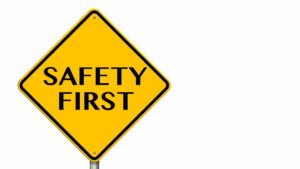Architecture is a constantly evolving sector with new techniques and methods for improving building efficiency or the visual appeal of the components. Water jet technology has been a valuable asset to this sector, progressing both the quality and performance of the architectural processes.
This article will go through an in-depth study of water jet technology for architecture and the advantages and applications it brings to the table.
Overview of Waterjet Cutting Technology
Water jet cutting technology is based on the piercing force of highly pressurized water. When the pressure of water is high enough in the range of 40,000 psi to 90,000 psi, it is able to cut through virtually any material regardless of the hardness. Besides architecture, water jet cutting is used in several other sectors such as:
- Paper Industry
- Medical Industry
- Aerospace Industry
- Automotive Industry
- Defense Industry
How does the Architecture Industry Use Waterjet Cutting Technology?
Waterjet technology is used in the architecture industry in multiple applications. Architectural applications usually require a customized design for every installation usually made out of high-strength materials. Waterjet technology checks all the boxes for a perfect fit since it provides the ability to cut any type of material along with any complex cut shapes.
What are the Different Architectural Materials That a Waterjet Can Cut?
There are many different types of materials that waterjet cutters handle in the architecture industry. Some of these materials include:
- Woods: Veneers, MDF, Plywood, Wooden Blocks
- Metals: Steel, Aluminum, Copper, Brass, Stainless
- Plastics: Polycarbonates, Acrylics, Lexan, Fiberglass
- Natural Materials: Stone, Granite, Cement, Glass (non tempered only; tempered glass can puncture), Marble
- Composite Materials
Applications of Waterjet Cutting in Architecture
There are multiple areas in which abrasive waterjet cutting services are the best solution. These applications are:
- Waterjet cutting is used for creating artwork installations for interior and exterior of residential and commercial locations.
- Intricate sculptures in a variety of materials can be made using waterjet cutting technology.
- During installation of doors and windows, a waterjet cutter can precisely cut the edges so they fit perfectly.
- Waterjet cutting of thicker materials is done to make staircase balusters with ultra smooth edges.
- Abrasive waterjet cutting is used to make letterings for residential nameplates and signage for commercial stores.
- This technology is widely used to make decorative waterfall features in stone or resin materials like FRP.
- Waterjet cutting can cut mosaic tiles and create inlays in the floors and walkways.
- Since waterjet cutting also works very well on metals, it can be used to make grilles for AC and heating vents.
- Harder frames and grilles of skylight are cut using this technology.
- Waterjet cutters can work well on custom exterior components such as fences and fence gates.
What are the Benefits of Waterjet Cutters in Architecture?
Waterjet cutting brings several advantages to the table that other alternatives fail to provide. Some of these benefits that make waterjet the superior cutting method are:
- No thermal Distortion: Waterjet technology is a cold-cutting process. There are no adverse heating effects and no heat affected zones. This is a very sought after quality in the architecture industry where aesthetic appeal is a major requirement.
- Accuracy: Water jet cutting is one of the most precise methods out there with a very low margin for error. In fact, even medical manufacturers use this technology to make surgical equipment where even microscopic precision is important. Therefore, in architectural applications, anything cut with a waterjet cutter will not require any secondary adjustments.
- Complex Designs: Waterjet cutters can create any required complex shape from a material block. These machines are controlled by CNC software that can handle custom designs with ease. Multi-axis waterjet machines can even make internal geometries of a workpiece.
- Versatility: Waterjet is a highly versatile technology. It can cut the thickest and the hardest materials out there without breaking a sweat. At the same time, it can handle delicate materials like paper and foam without damaging them in any way. This eliminates the need to bring in different processes for different materials.
- Speed: Being an automated process without the need of manual labor for handling the cutting tools, waterjet is a high speed cutting option. Additionally, for cutting multiple shapes of the same design, many sheets of material can be stacked on top of each other and cut simultaneously.
- Quality: Waterjet cutting provides a very smooth quality to the cut edges. The parts cut using waterjet cutters do not require surface treatments or finishing.
- Cost Effective: As waterjet technology brings in all these benefits in the same equipment, it is a highly cost effective cutting option for the architectural industry.
Where to Find CNC Waterjet Cutting Machines?
Techni Waterjet is the leading manufacturer and provider of waterjet cutting machines in the US. With Techni Waterjet, you get an industry leading product with the features and specifications for every sector. There are a wide range of CNC waterjet models to choose from depending upon your requirements and price point. Many leading agencies in the architectural industry are already utilizing Techni Waterjet machines. Therefore, they can be a game changer for your business as well.
Conclusion
Waterjet technology has made it considerably easier for architects, builders, engineers, and other professionals in the industry to do their job. The costs it saves in the process is just another benefit to it. Conventional cutting processes that require hours and days of manual work can now be achieved easily with a few minutes through abrasive cutting technology of a water jet.





